From the valley of Verzolet to the plateau of Hermelix

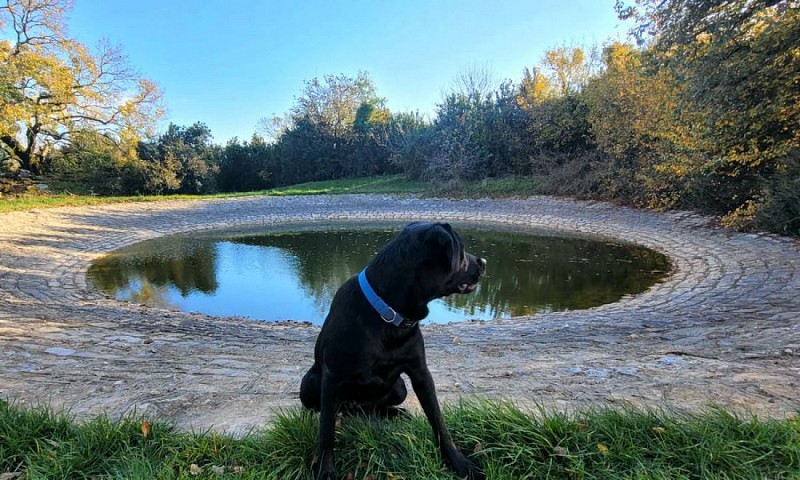
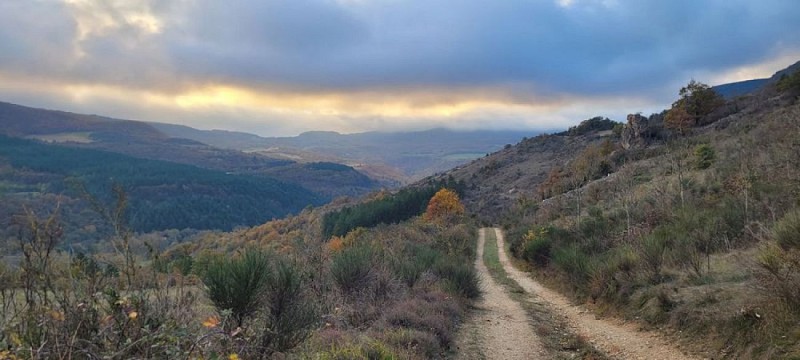

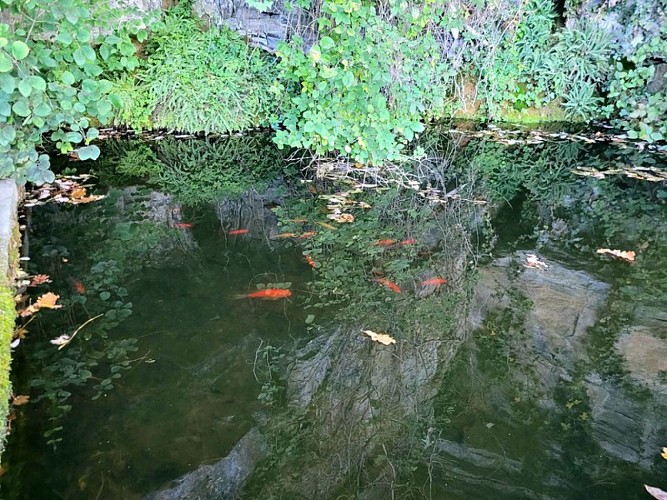
Description
The Verzolet valley is a haven of freshness during the summer season. Fields and pasture lands on the causse: this walking route unobtrusively nestled between the Sorgues valley and the frontal causses provides striking contrastsFrom the church, follow the D7 towards Saint-Félix-de -Sorgues 50 m,take the first left and go past the bakery. After the porch, head to the right and then climb,let the fork to right and continue to climb over 250 m after the water resevoir.Take the left path towards Hermelix. Run along the fields on 800 m,down up to the Verzolet by the operating path,on a path that sinks the woods. After 1 km, cross a ravine and continue until a gateway.Shortly after the gateway, at the fork, follow the left path that climb to Hermelix.Bypass the village on the left and take still left,explotation path about 200 m.Getting to a branch indicating towards Versols, right. Access to the fountain: to head left (southwest) and return the farm road to the intersection indicating Versols.Take the path that runs between two rows of boxwood, pass before the lavogne and continue for 1 km. Take route du Causse Hermelix 50 m left, then go to the left to arrive to the farm Sayssou.150 m before the buildings around the farm by the right. After 100 meters slightly uphill, around the bend,turn left into the path down to the ravine Sayssou.Pass before the cross Sayssou,continue the descent and lead on the explotation road.Continue, almost opposite, the path down the slope and joins Versols.
Technical informations
11 km
|
max. 669 m
min. 367 m
| |||
Altimetric profile
Starting point
Steps

Château et vestige de fortification
La famille de Roquefeuil a occupé les lieux durant 8 siècles, de 1250 à 1810, date à laquelle le château est sorti de la famille. La batisse a alors été vendue à plusieurs propriétaires et une partie des bâtiments est devenu logis de ferme. Il a été racheté par les époux Roquefeuil en 1962.Le château est une partie du castrum (place fortifiée) qui comprenait tout l'ancien village dans une pointe entre Sorgues et Verzolet. La place forte, à l'origine (XIe siècle), ne comportait qu'un petit château qui a ensuite été étendu au XIIIe ou XIVe siècle pour les affronts de la guerre de 100 ans.
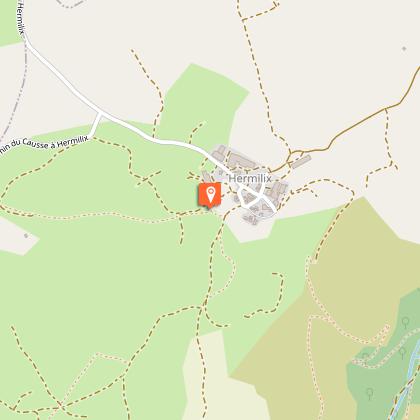
Lavogne d'Hermilix
Une lavogne, c'est tout simple à comprendre, il suffit d'imaginer un immense parapluie renversé qui récolte l'eau de pluie !Tout commence par une mare naturelle dont le sol argileux est totalement imperméable. Cette petite mare est une véritable aubaine pour l'homme qui aménagera très vite ces points d'eau si précieux car sur les causses l'eau s'infiltre dans le sol fissuré. Il commencera donc par daller l'intérieur puis finira par le pavage de son pourtour car il faut préserver la qualité de l'eau et empêcher le ravinement causé par le piétinement des troupeaux de brebis qui viennent s'y abreuver. Pour le dalage on utilise soit des lauzes, soit des pierres plates, soit des pavés posés les uns après les autres.Une fois construit, ce grand parapluie renversé accueillera une foule d'animaux, il suffit de se pencher au-dessus, ça grouille, ça gigote, quel folklore !
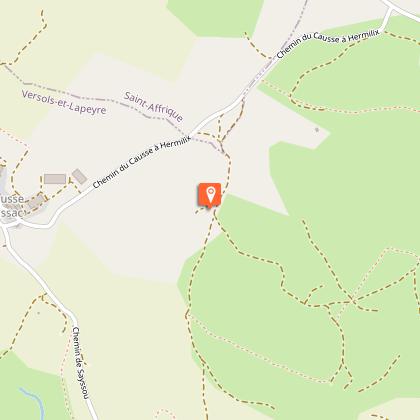
Dolmen d'Hermilix
Les dolmens datent du milieu du 3ème millénaire avant notre aire. Il s'agit de chambres sépulcrales ouvertes, bâties sous tumulus et destinées à recevoir des inhumations successives. Les dolmens sont nombreux sur le Causse, les dalles se trouvant à profusion sur les terrains calcaires. Elles ont été transportées à l'aide de rouleaux de bois et leviers en bordure des anciens chemins.Ce dolmen simple sans dalle de chevet est sur un tumulus d'environ 8 m. La dalle de couverture est un peu inclinée, en raison de l'affaissement d'un des supports.
Points of interest

Castle and remains of fortification walls
The Roquefeuil family lived here over a period of eight centuries, from 1250 to 1810, the date on which the owning family had to sell the castle. The building was then sold to different owners and part of it was converted into a farmhouse. Then in 1962, a couple from the Roquefeuil family bought back the stronghold.The castle and the whole of the old village were included in a walled area called a castrum which spread out between the Sorgues and the Verzolet rivers. The castrum was originally composed (11th century) of only a small castle that was later extended during the 13th or 14th century to protect people from the clashes during the One Hundred Years War.
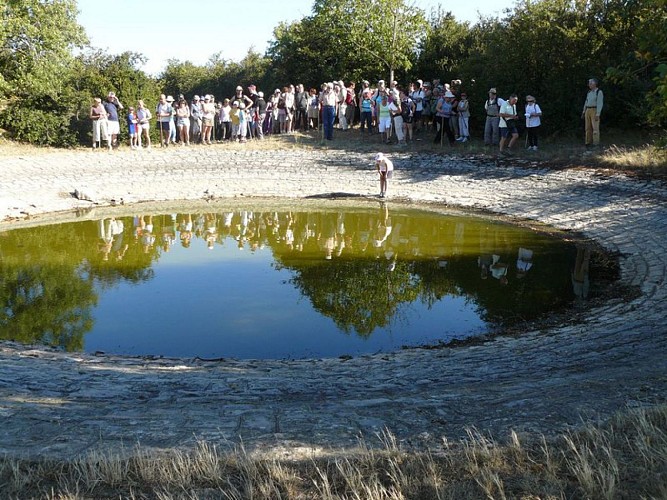
Hermilix lavogne
How a lavogne works is very easy to understand, just imagine a gigantic upturned umbrella that collects rainwater!At the beginning there was a natural pond with an impervious clay soil. This small pond was a real boon for people who quickly set these watering sources up as they were so critical on the causses where water seeps into the cracked limestone. To start with, they tiled the inside of the pond and finished off the work by laying paving stones around the edge of the pond to preserve the water quality and prevent gullying due to the large flocks trampling the soil when the sheep come to drink.The pond tiling was made either with lauzes, flat stones or with paving stones laid one after the other.Once completed, this gigantic upturned umbrella would provide a great variety of animals with a welcoming habitat, just look down over a lavogne and see how it swarms and buzzes with life, what a frenzy of activity!
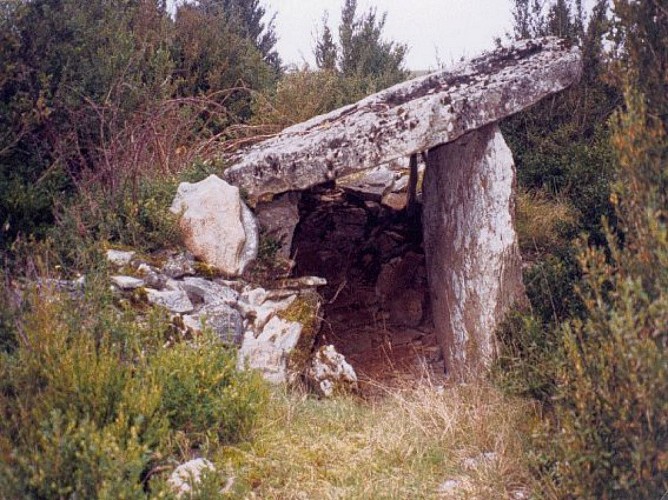
Dolmen d'Hermilix
Les dolmens datent du milieu du 3ème millénaire avant notre aire. Il s'agit de chambres sépulcrales ouvertes, bâties sous tumulus et destinées à recevoir des inhumations successives. Les dolmens sont nombreux sur le Causse, les dalles se trouvant à profusion sur les terrains calcaires. Elles ont été transportées à l'aide de rouleaux de bois et leviers en bordure des anciens chemins.Ce dolmen simple sans dalle de chevet est sur un tumulus d'environ 8 m. La dalle de couverture est un peu inclinée, en raison de l'affaissement d'un des supports.
Additional information
Public transport
Travel by bus or train: www.mobimipy.fr/carpooling : BlaBlaCar, Rézo Pouce, Covoiturage-libre, Idvroom, LaRoueVerte, Roulez malin
Advice
Box tree moths are active from May to October. During the caterpillar phase, they feed on the leaves of box trees. They crawl down trees and move on long silken threads, although these threads are annoying when hiking they do not pose any health risk
Advised parking
Cross the bridge and turn left on the bank opposite the village
Access
Versols, 10 km south of Saint-Affrique by D 7
Arrival
Versols
Ambiance
Explore the Verzolet valley and its stream which is a tributary to the Sorgues river, then walk uphill towards the Hermilix causse. There, as far as the eye can see, enjoy a landscape shaped by the agro-pastoral activity unfolding before you. The beautiful lavogne in Hermilix is worth seeing: a large pond with paved bottom and edge to water the sheep.
Departure
Versols in front of the church
Data author
